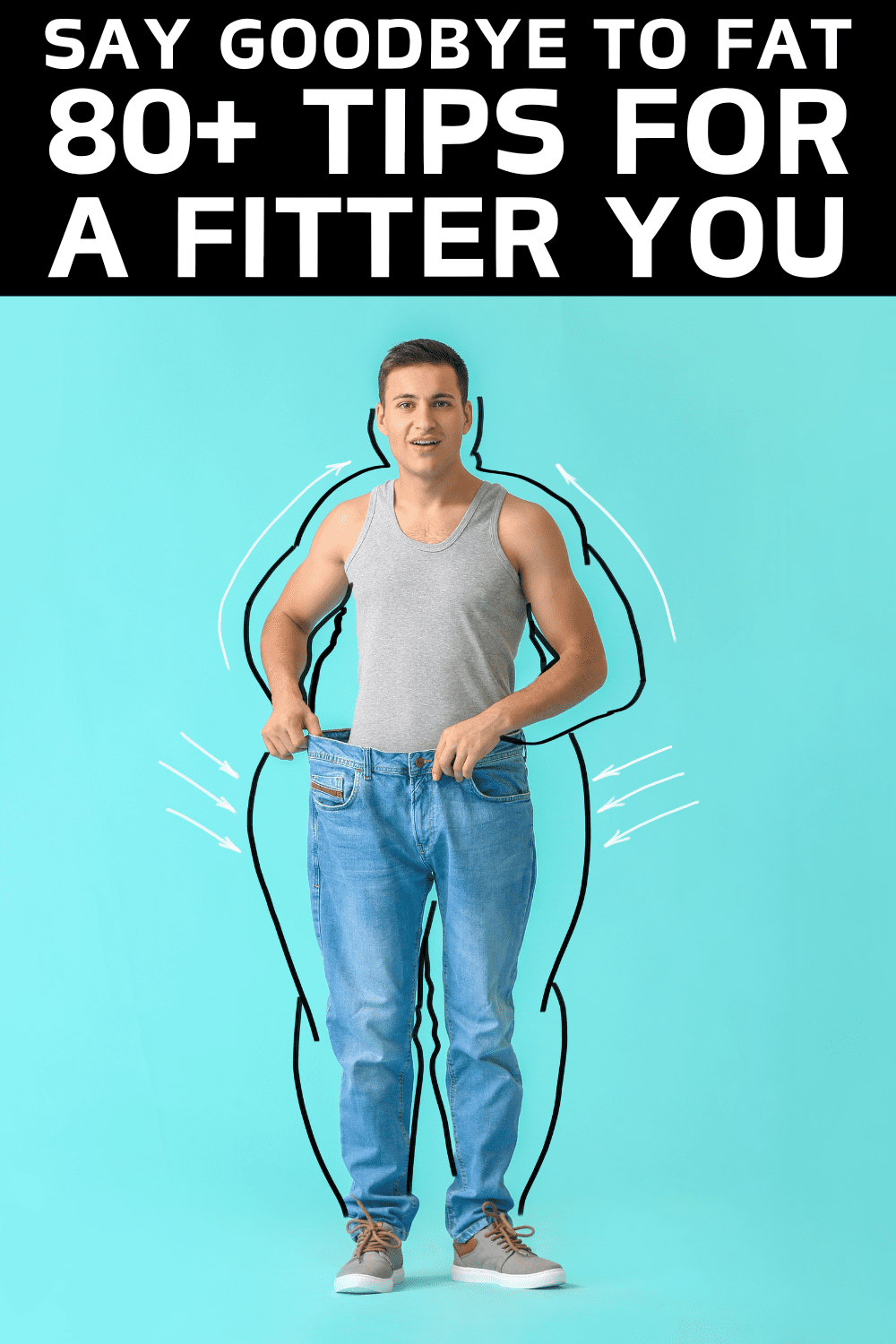
Losing weight and feeling your best can seem like a daunting task, but it doesn’t have to be! This guide is packed with over 80 achievable tips to help you get on track and reach your unique goals in a healthy and sustainable way.
Fuel Your Body Right:
- Cook at home: Take control of ingredients and portion sizes.
- Choose complex carbs: Opt for whole grains, fruits, and vegetables over refined options like white bread and pasta.
- Limit gluten: If you’re sensitive, this can help reduce bloating and inflammation.
- Hydrate!: Aim for 3-5 liters of water daily to flush toxins and support weight loss.
- Minimize restaurant meals: They often contain high calories, unhealthy fats, and added sugars.
- Plan your grocery trips: Avoid impulse purchases of unhealthy foods by going to the store well-fed.
- Stock healthy snacks: Keep nuts, dried fruit, and seeds around for satisfying, nutrient-rich options.
- Be mindful of calorie intake: Track your intake using a food journal or app.
- Embrace protein: Build and maintain muscle mass with protein-rich foods like meat, fish, legumes, or tofu.
- Incorporate meat-free days: Explore plant-based proteins and give your digestion a break.
- Eat slowly: Allow your body time to register fullness by enjoying meals at a relaxed pace.
- Ditch sugary drinks: Opt for water, unsweetened tea, or coffee instead.
- Stay away from junk food: These offer no nutritional value and are loaded with unhealthy ingredients.
- Limit red meat: Opt for leaner options and consume them in moderation.
- Cut back on candy: Satisfy cravings with fruit, nuts, or dark chocolate in small amounts.
- Switch to brown rice and whole-wheat bread: These options are packed with more nutrients than their refined counterparts.
- Swap mayonnaise for healthier alternatives: Opt for Greek yogurt or avocado as condiments.
- Manage stress healthily: Avoid emotional eating by finding healthy coping mechanisms like exercise, journaling, or talking to a friend.
- Try green tea: Rich in antioxidants, it may boost metabolism and promote weight loss.
- Prioritize fruits and vegetables: They’re low in calories and high in nutrients.
- Choose raw nuts over packaged snacks: They provide protein, healthy fats, and fiber.
- Cut out added sugar: It’s high in calories, offers no nutritional value, and can negatively impact health.
- Include ginger and garlic: They boast anti-inflammatory properties and may aid in weight loss.
- Embrace avocado: This nutrient-rich food offers healthy fats, fiber, and protein.
- Use smaller plates: Studies show people tend to eat more with larger plates.
- Wait 10 minutes before going for seconds: Let your body register fullness before reaching for more.
Habits for Success:
- Start your day with water: Rehydrate and potentially boost metabolism.
- Drink herbal tea with honey: Options like green tea and ginger tea offer health benefits and may support weight loss.
- Try apple cider vinegar: Studies suggest it may improve blood sugar control, promote weight loss, and boost the immune system.
- Include bananas in your breakfast: Rich in potassium, they aid heart health and satiety.
- Don’t skip breakfast: Include protein and healthy fats to stay energized and avoid overeating later.
- Take a daily walk: Aim for at least 30 minutes to start your day moving.
- Increase daily steps: Aim for 10,000; park further, take the stairs, or walk during breaks.
- Walk your dog: A fun way to get exercise and fresh air for you and your furry friend.
- Consider intermittent fasting: This eating pattern involves cycling between fasting and eating periods and offers various health benefits.
- No gym? No problem! Many home workouts require no equipment, and you can find them online or in magazines.
- Stop making excuses: Stay focused and motivated by reminding yourself why you started.
- Clean your house: Burn calories and get moving by tackling chores.
- Walk while talking on the phone: Avoid sitting for long periods and get extra steps in.
- Wash your car: Another way to get some exercise and burn calories.
- Move throughout your day: At your desk, stand up and move around every 30 minutes.
- Drink water before meals: Feel fuller and potentially reduce calorie intake.
- Take time for mental relaxation: Stress reduction can improve sleep, overall well-being, and aid in weight management.
Exercise for Fitness & Weight Loss:
- Feeling stressed? Hit the gym! Exercise is a natural stress reliever and mood booster.
- Walk to work if possible: Enjoy fresh air, get exercise, and save time.
- Get off public transportation early and walk: Add extra steps and avoid sitting for too long.
- Invest in a sit-stand desk: Alternate between sitting and standing throughout the day for improved health.
- Take the stairs whenever possible: Burn calories and strengthen your legs.
- Park further away and walk: Add extra daily steps and avoid circling for close parking.
- Embrace gardening: Enjoy nature, exercise, and potentially grow your own food!
- Plan your meals: Avoid impulse choices and unhealthy eating by planning ahead.
Workout Smarter, Not Harder:
- Stretch before exercising: Improve flexibility and reduce injury risk.
- Master bodyweight exercises: Push-ups, pull-ups, squats, lunges, and planks are effective and require no equipment.
- Workout outdoors: Enjoy fresh air and sunshine for a mood and motivation boost.
- Try a bodyweight workout (modified for your level):
- 10 push-ups
- 10 assisted pull-ups (or modified alternative)
- 10 squats
- 10 lunges per leg
- 1-minute plank
- Repeat 3-4 times
- Add incline to your treadmill routine: Challenge your muscles for extra calorie burn.
- 20 minutes is all you need: Even short workouts make a difference.
Make Small Lifestyle Changes, Big Results:
- Quit alcohol: Improve your physical and mental health by reducing or eliminating alcohol consumption.
- Do bodyweight exercises during TV commercials: Every bit counts!
- Reduce smoking gradually: Quitting is difficult, but any reduction helps.
- Prioritize sleep: Aim for 7-8 hours nightly for optimal health and energy levels.
- Wake up earlier and enjoy the morning: Start your day relaxed and avoid feeling rushed.
- Spend your mornings wisely: Opt for exercise, reading, or meditation over checking your phone first thing.
- Maintain a consistent sleep schedule: Wake up at the same time, even on weekends, to regulate your body clock.
- Take quiet time: Give your mind a break and unwind by spending time alone with your thoughts.
- Schedule relaxation time: Dedicate time to activities you enjoy, like reading, baths, or spending time with loved ones.
- Limit screen time: Excessive TV watching can negatively impact your health and well-being. Engage in outdoor activities, socialize, or read instead.
Stay Motivated & Achieve Your Goals:
- Write down your goals and pathway to success: Be specific and measurable for clear direction.
- Track your progress: Monitor your journey using food journals, regular weigh-ins, or body fat percentage measurements.
- Find inspiration online: Watch motivational YouTube videos for an extra push.
- Weigh yourself regularly, but don’t obsess: Focus on the long-term trend, not daily fluctuations.
- Read success stories: Learn from others and find motivation in their journeys.
- Find a support group: Connect with people who understand your goals and can offer encouragement.
- Remember, setbacks happen: Don’t give up! Pick yourself up, learn from the experience, and keep going.
- Keep a journal: Reflect on your progress, challenges, and motivation.
- Show up, even for short workouts: Every bit of movement counts.
- Believe in yourself: You have the power to achieve your goals!
Conclusion:
Remember, weight loss is a journey, not a destination. By incorporating these achievable tips into your daily routine, you can make healthy and sustainable changes to reach your goals and feel your best!
Resources:
- A high-protein diet can help you lose weight and keep it off. Source: https://pubmed.ncbi.nlm.nih.gov/28067945/
- Eating plenty of fiber can help you feel full and satisfied, which can lead to weight loss. Source: https://pubmed.ncbi.nlm.nih.gov/24425939/
- Drinking plenty of water can help boost metabolism and promote weight loss. Source: https://pubmed.ncbi.nlm.nih.gov/25505219/
- Reducing your intake of processed foods, sugary drinks, and unhealthy fats can help you lose weight and improve your overall health. Source: https://pubmed.ncbi.nlm.nih.gov/27548063/
- Getting regular exercise is essential for weight loss and overall health. Source: https://pubmed.ncbi.nlm.nih.gov/24734431/
- Getting enough sleep can help regulate hormones and promote weight loss. Source: https://pubmed.ncbi.nlm.nih.gov/27382638/
- Managing stress can help reduce cortisol levels, which can promote weight loss. Source: https://pubmed.ncbi.nlm.nih.gov/28942351/
- High-intensity interval training (HIIT) is a very effective way to burn calories and improve cardiovascular fitness. Source: https://pubmed.ncbi.nlm.nih.gov/23262663/
- Strength training helps to build and maintain muscle mass, which can boost metabolism and promote weight loss. Source: https://pubmed.ncbi.nlm.nih.gov/25489318/
- Bodyweight exercises are a convenient and effective way to workout at home. Source: https://pubmed.ncbi.nlm.nih.gov/28910993/











